Ligia (Ligia) pallasii Brandt, 1833Common name: Rock louse, Common rock louse |
|
| Synonyms: None | 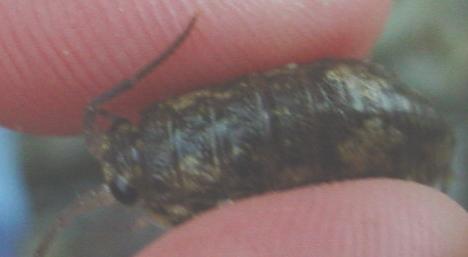 |
| Phylum Arthropoda
Subphylum Crustacea Class Malacostraca Subclass Eumalacostraca Superorder Peracarida Order Isopoda Suborder Oniscoidea Family Ligiidae |
|
| Ligia (Ligia) pallasii found on Swirl Rocks, Washington. | |
| Photo taken by Dave Cowles, at Swirl Rocks. July 2002 | |
The bodies of these isopods are usually robust and approximately 35 mm in length, however I found that around Swirl Rocks these isopods greatly vary in size. The eyes are separated by a distance equal to twice the greatest diameter of an eye. They have short uropods, and a basal segment as long as broad. Their uropods are terminal and close to the midline (photo).
How to Distinguish
from
Similar Species:
They may be
confused
with their
relative, L. (M.) occidentalis in central
California because of
geographic overlap. However, where overlap occurs the two
species
are generally ecologically segregated in that the L.(L.)
pallasii
prefers sea cliffs and the L. (M.) occidentalis
prefers rocky beaches.
Essentially terrestrial, they prefer to live near the high tide line.
Habitat and Range:
These isopods are
often
found in
caves and crevices on rocky cliffs. They live in the high intertidal
zone
from the Aleutian Islands (Alaska) to Santa Cruz (California).
Biology/Natural
History:
A researcher,
Wilson
(1970), found
that the osmoregulatory responses might differ according to their
behavior
and ecology. The slower moving Ligia
pallasii that live
permanently in cool, moist habitats are characterized by fluctuating
hyposaline
conditions, whereas their faster moving relative, L. (M.)
occidentalis
alternates between dry and wet conditions so it can replace water
previously
lost by evaporation. This species of isopods are aerobic and
breathe
using pleopods,
which need to be moist in order to function properly. To keep
this
moistness, the isopod must be immersed or dip the tail in water so that
the uropods can serve as capillary siphons. Ligia
pallasii feed on dead plants and animals, and the algal
film from
upper intertidal rocks. They are primarily fed upon by birds
and
crabs. The life span of these isopods is about 1.5-2 years with the
breeding
period in the spring and early summer months.
Mothers
brood their young, which do not have a planktonic larval
stage. Given
this life cycle, the exchange of genes among populations up and down
the
coast may be limited. Molecular genetic studies (Renate,
2013) show
that this species is most diverse genetically in the southern
(California)
part of its range and that much of the northern range may have only a
few
closely related haplotypes.
| Return to: | |||
| Main Page | Alphabetic Index | Systematic Index | Glossary |
References:
Dichotomous Keys:Carlton et al., 2007
Kozloff, 1987
General References:
Lamb and Hanby, 2005
Morris,
Abbott, and Haderlie, 1992
Scientific Articles:
Carefoot, T.H., B.E. Taylor, and K. Brett, 1998. A day in the life of an isopod: time and energy allocations in the semiterrestrial Ligia pallasii. Israel Journal of Zoology 44: pp 463-471
Eberl, R., 2010. Sea-land transitions in isopods: pattern of symbiont distribution in two species of intertidal isopods Ligia pallasii and Ligia occidentalis in the Eastern Pacific. Symbiosis 1:1 pp. 107-116
Eberl, R., 2012. Distribution, habitat and food preferences of sympatric high intertidal isopod species, Ligia occidentalis and Ligia pallasii (Ligiidae: Oniscidea). Journal of Natural History 46: pp 29-30
Eberl,
Renate, 2013. Phylogeography of the high intertidal
isopod
Ligia pallasii Brandt, 1833 (Isopoda: Oniscidea) from the
Aleutian
Islands to Monterey Bay. Journal of Crustacean Biology 33:2
pp. 253-264
General Notes and Observations: Locations, abundances, unusual behaviors, etc.:
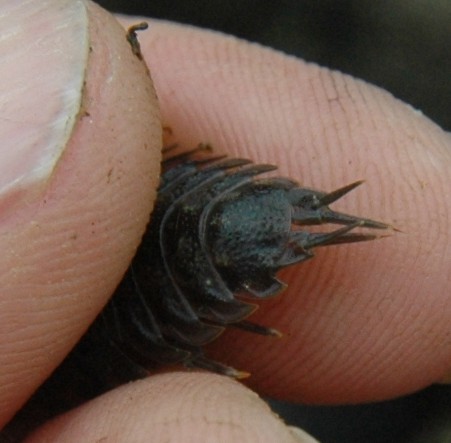
Another view of L. pallasii tail with
uropods. Photo by
Dave Cowles, June 21, 2005 on Swirl Rocks.
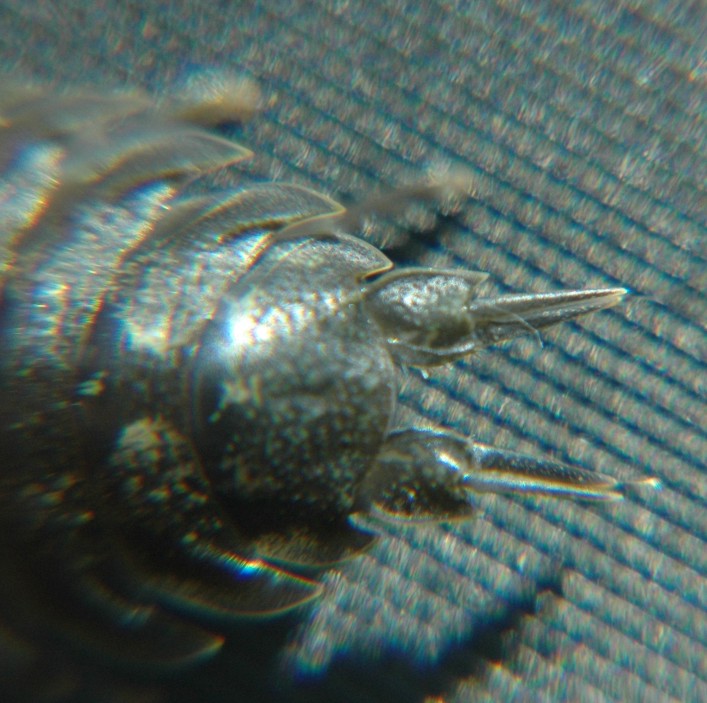
A closeup of the uropods, showing their terminal position
(characteristic
of Oniscoidea)
and the fact
that the basal segment is as long as it is broad.

The underside of the pleon (abdomen) shows the arrangement of the
pleopods
and uropods in this species.
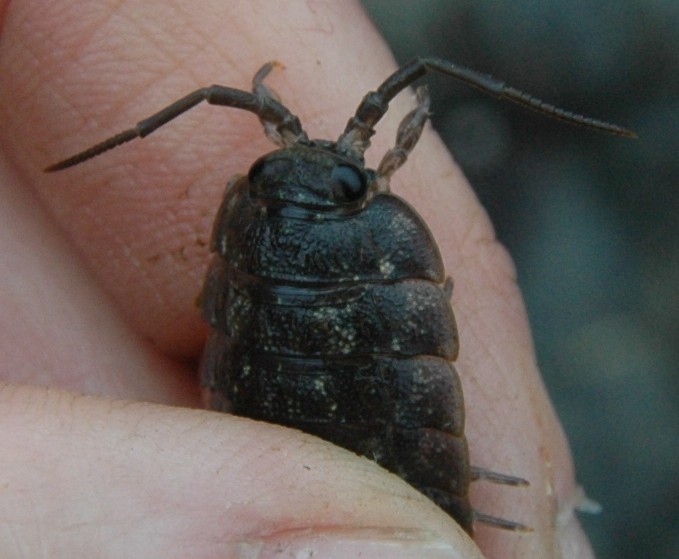
A closeup view of the head. Note the multiple articles on the
flagellum of the second antenna. Photo by Dave Cowles, June
21, 2005
on Swirl Rocks
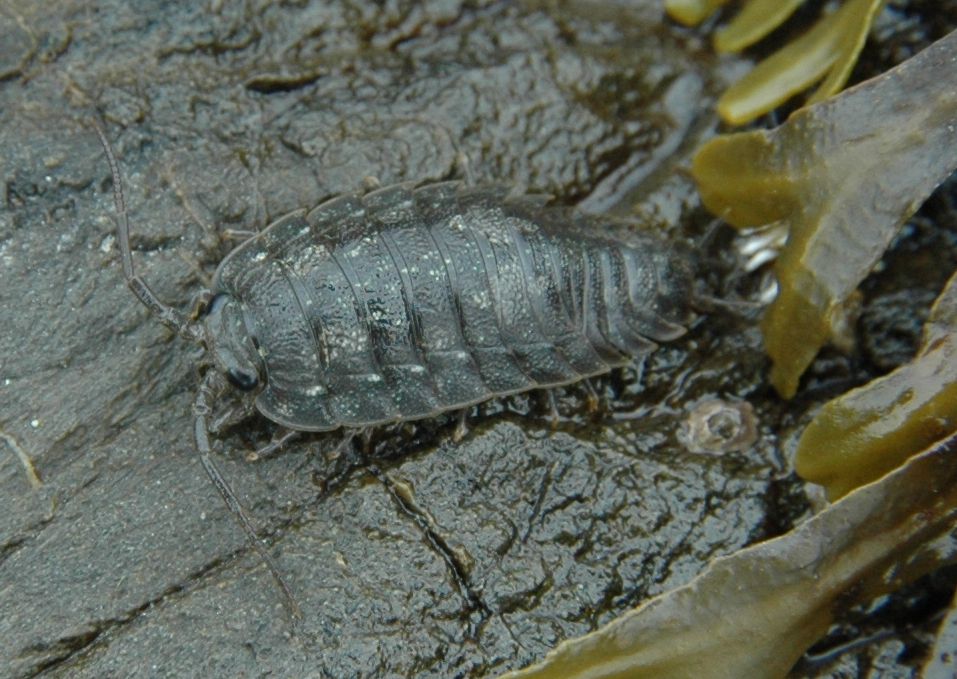
An individual crawling on a rock near Fucus. Photo by Dave
Cowles
at Swirl Rocks, June 21, 2005
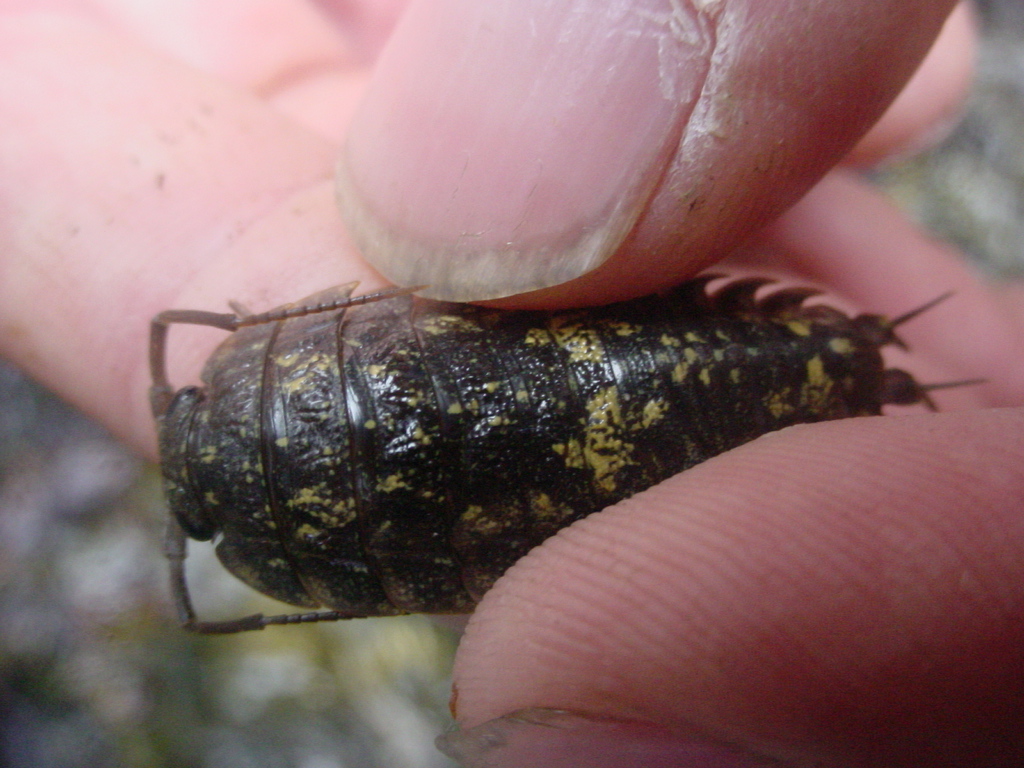
A scattering of yellowish-white spots on the dorsum is
common.
Photo by Dave Cowles, July 2005

A wider individual from Swirl Rocks. Note how it is the coxal plates that make the animal appear so wide. Photo by Dave Cowles, July 2009
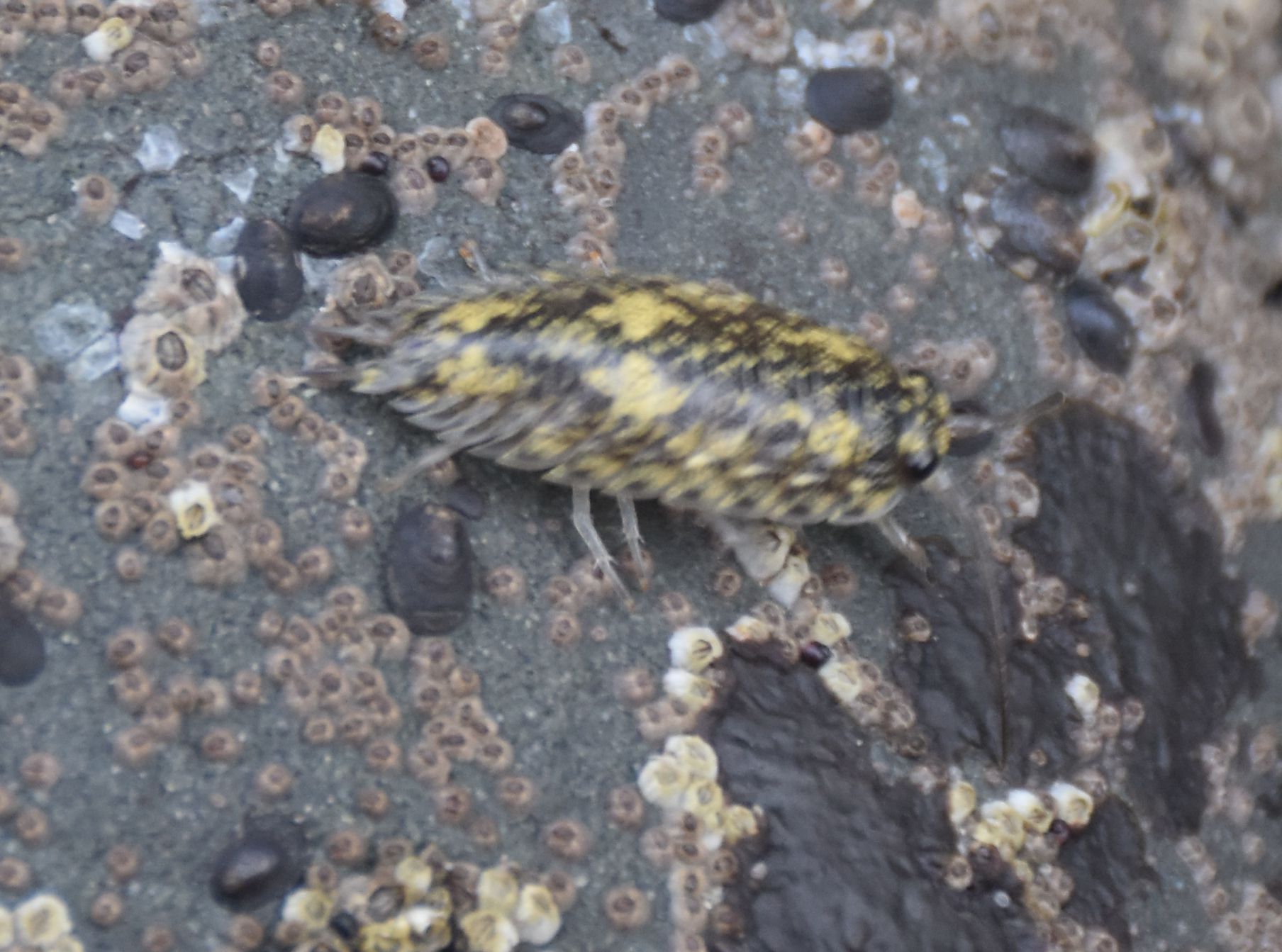
In
a typical intertidal view, this Ligia pallasii skitters across a Rialto
Beach rock at low tide. Photo by Dave Cowles, July 2019
Authors and Editors of Page:
Created Original Page: Heidee Leno (2002)
Edited by: Hans Helmstetler 11-2002